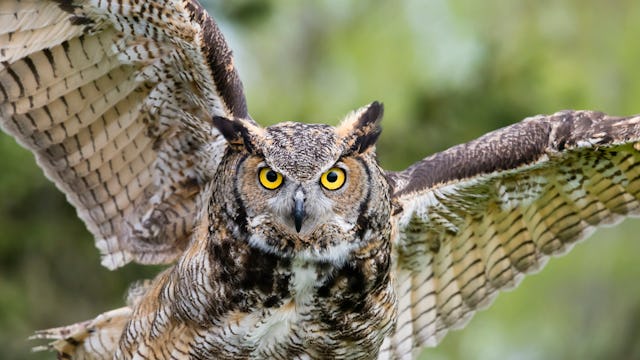Beware The Hidden Dangers Of Rodent And Pest Control Products

Spring has finally sprung across the country, which means mammals, reptiles and bird babies abound. Maybe you’ve seen a herd of Eastern Cottontail bunnies hopping around your lawn or caught a rare glimpse of a fox cub. “How adorable,” you might exclaim as you watch the little fluff balls bound off into the wild (cue the melodic Disney music).
Or if you’re me, you’re dealing with a rapidly multiplying mouse family that raids the pantry on the daily and uses the dog’s water bowl as an outhouse.
Not so adorable.
In fact, it’s downright nasty. I’m totally freaked out that tiny, pooping rodents with their sharp teeth and scurrying feet are living in my house with me. Anything that’s supposed to live outside but has decided to live inside – be it mice, rats, squirrels or what have you – makes me shudder and keeps me up at night. My first instinct is to get rid of them for good, as in forever, if you know what I mean.
While it’s extremely tempting to call a professional exterminator who I know will put down super-strength pest poison, I know that stuff isn’t only dangerous to the pesky mice. My dog or candy-obsessed kids might accidentally swallow it. It never occurred to me, though, that rodent killing poison might also threaten other unsuspecting creatures.
Rodenticides used by exterminators, farmers, and freaked out moms like me make their way beyond the nuisance rodents they’re meant for and it’s killing our wildlife, especially raptors, like owls, hawks, falcons and eagles. Second-generation strength rodenticides are the mack-daddy of poisons meant to eradicate rodent populations. It may sound heartless, but when rat populations threaten human populations with disease, we have to get rid of them. When rats built up a tolerance to the less potent poison, the World Health Organization developed today’s stronger version.
This stuff works by preventing the blood to clot and takes three or four days to work. Meanwhile, the mouse or rat that ate the poison is moving at a much slower pace than usual, making it an easy-looking target for predators. The bad news is, that easy meal is chock-full of lethal poison that causes grave harm — and in many cases, death — to the poor bird who at it.
The way these anti-coagulants work is heart-breaking. In an article in Audubon magazine, Maureen Murray, clinical assistant professor at the Tufts School of Veterinary Medicine, shared photos of a red-tailed hawk with a hematoma that caused its eye to blow up to 10 times its normal size; a great-horned owl had a hematoma running the length of its wing. These poisons have the potential to cause all types of predators, including bobcats, coyotes and foxes to die a slow death from internal bleeding.
Let’s not forget how incredibly dangerous rodenticides are to our pets and kids. According to the National Capital Poison Center, more than 34,000 children under the age of six unintentionally ingested pesticides in 2016. Even if you think you’re being super stealthy about where you put out poison, kids and pets often find it. Plus, the very rodents you’re trying to kill will sometimes move it around to more visible places.
No one wants to hurt innocent wildlife or put their kids in danger. The good news is, extremely toxic rodenticides are no longer available for consumer use. You aren’t going to find this stuff on the shelf at your local hardware store. You can, however, find it through professional exterminators, plus it’s still approved for agricultural use, according to the Environmental Protection Agency.
Fortunately, there are alternatives. It’s more work on our part and it might take more time, but coming up with an Integrated Pest Management (IPM) plan is not only kinder to wildlife but less toxic to the humans in your life. You’ll need a professional to help you and every situation is unique, requiring different methods to get rid of rodents once and for all.
The safest thing to do is figure out how the rodents are getting into your house, then seal up the entrances and politely tell them to beat it back into nature. You’ll also need to keep your property debris-free – no more random piles of leaves or wood or overgrown gardens. Make sure your trash is in an animal-proof container and for the love of Pete, keep pet food in a place where the mice and rats can’t get to it.
I know you’re skeeved out by the scritch-scratch of little claws scampering across the floors at night, but please don’t use poisons that harm wildlife. Just take a deep breath and do the right thing. You can get rid of pests without killing the innocent predators that keep the natural ecosystem balanced and thriving.